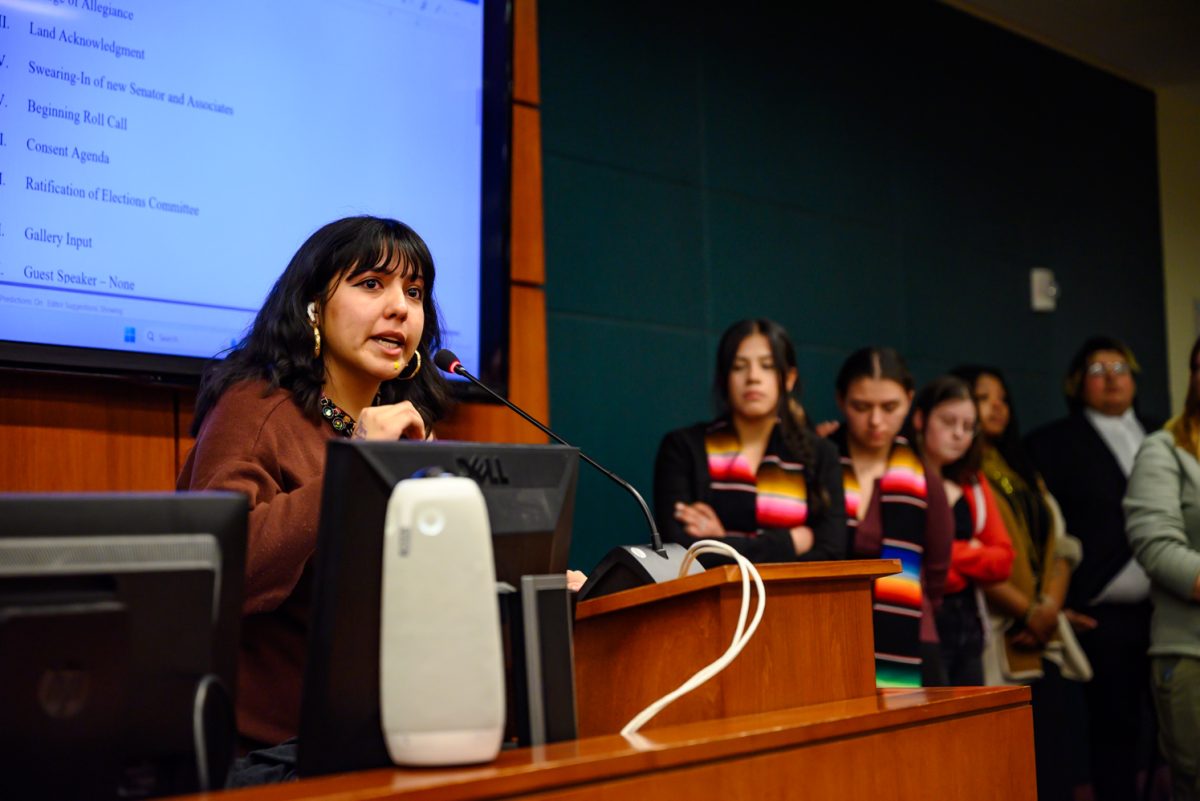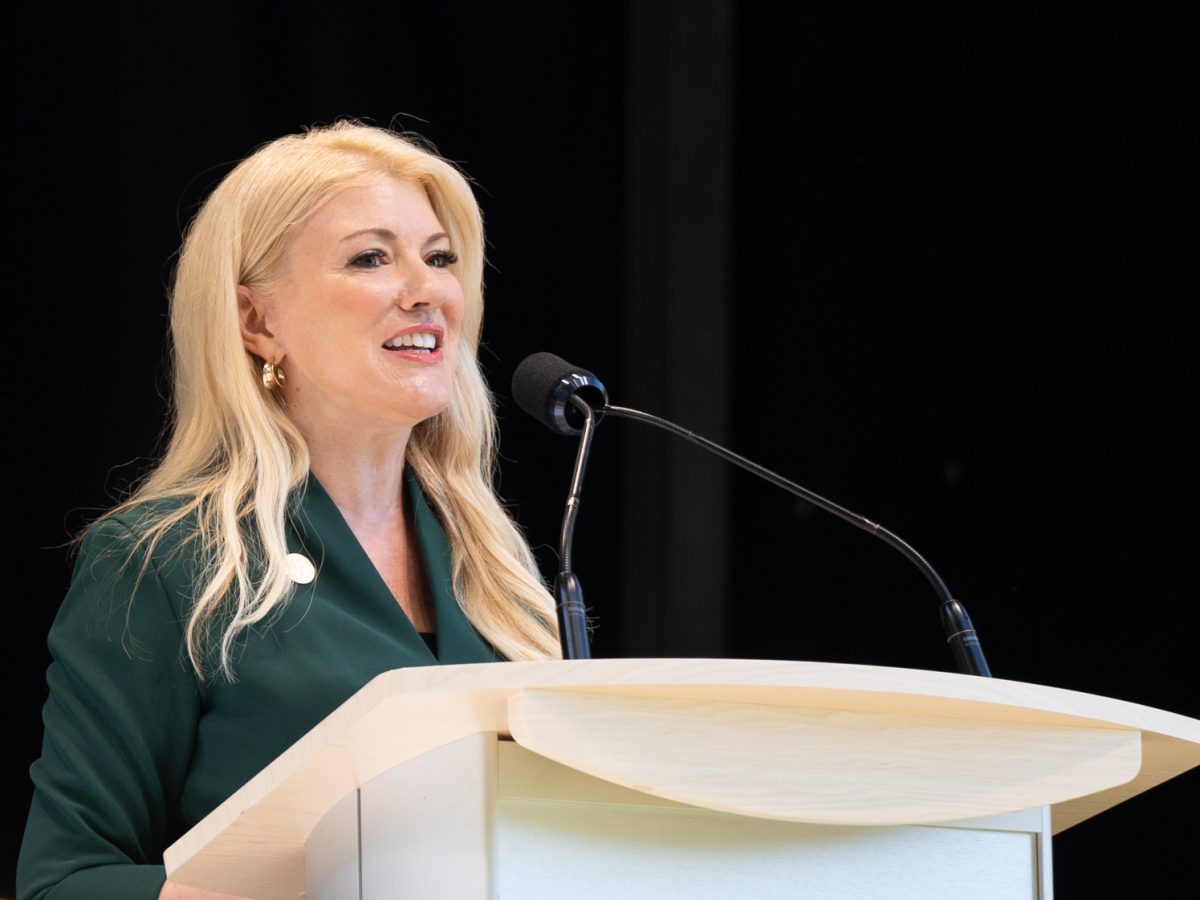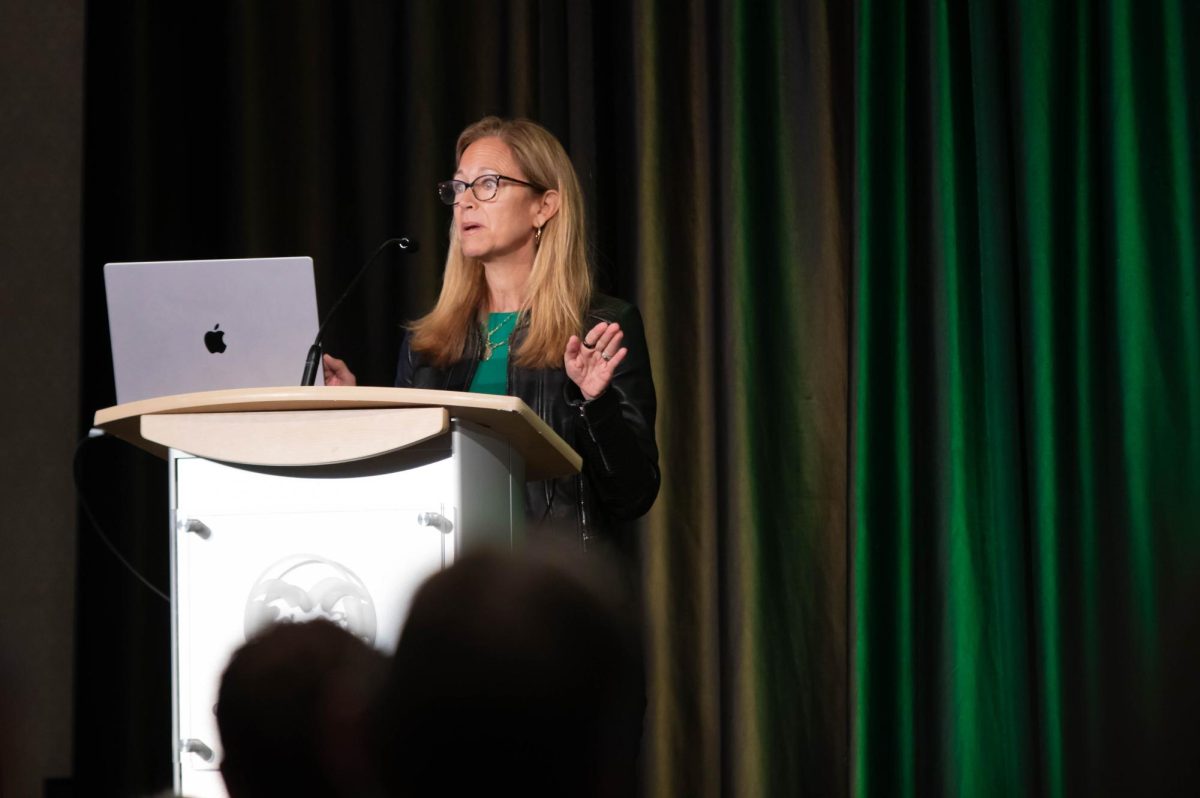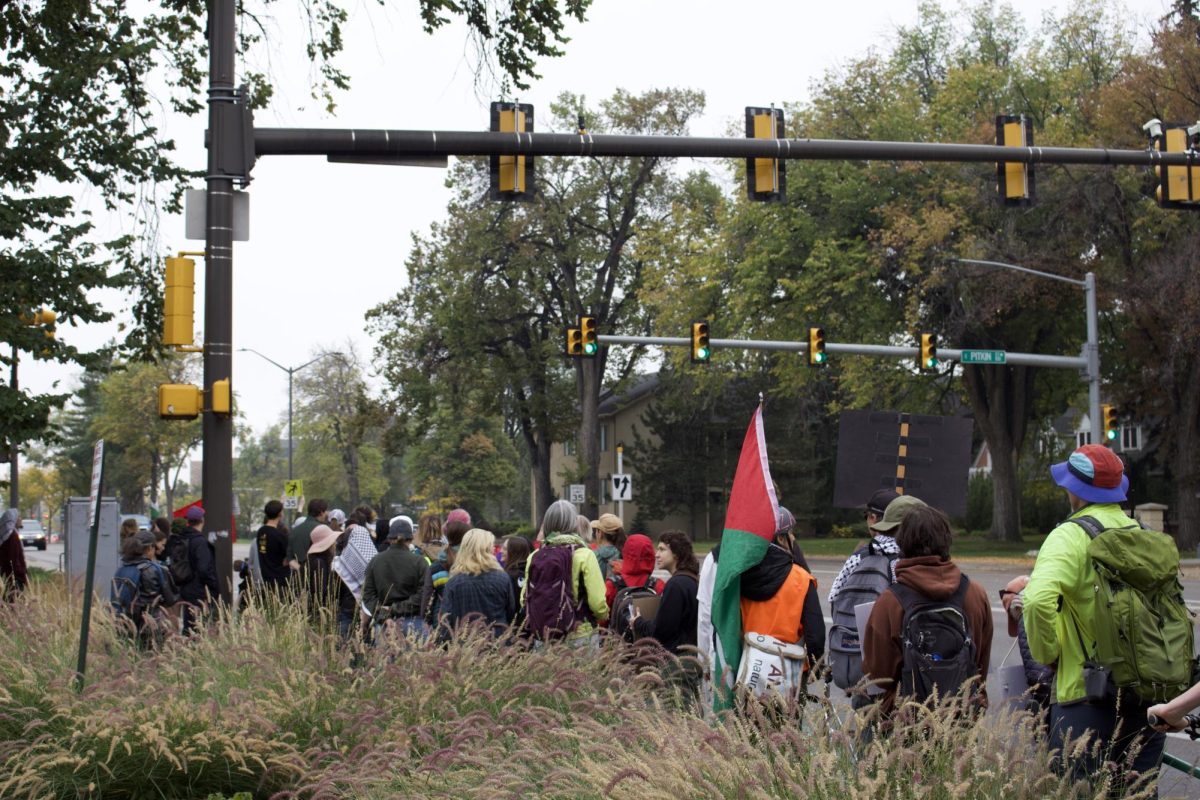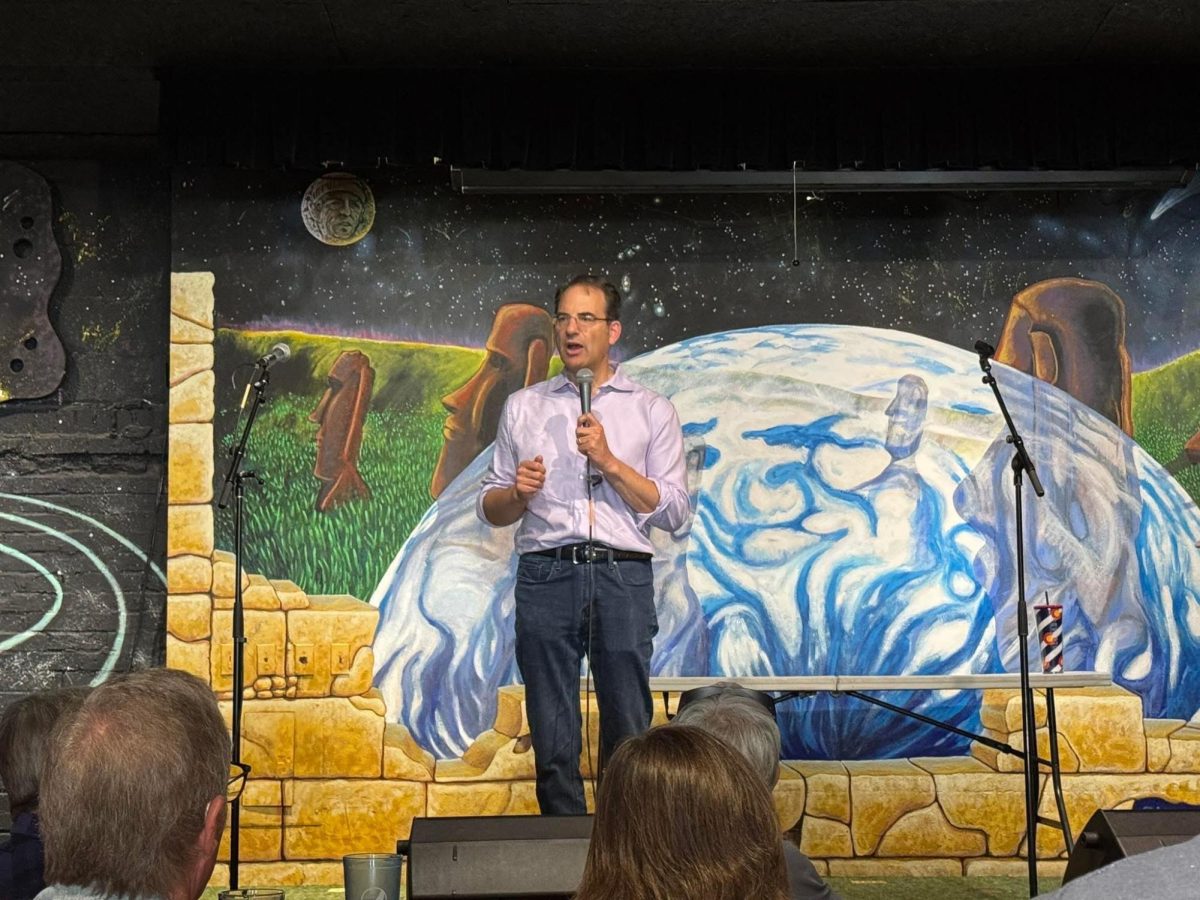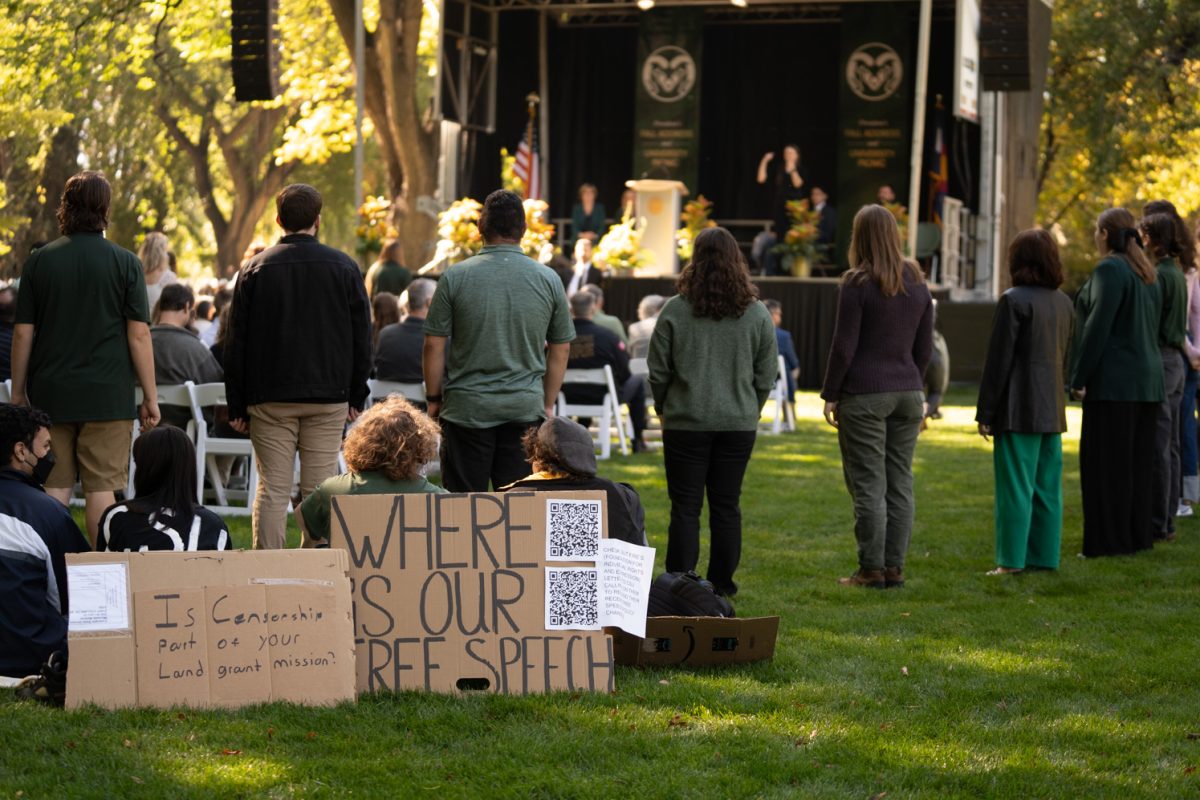There is a peculiar pile of dirt near the Clark building at Colorado State University. Upon a closer look, there is a sign that reads, “Pollinator Garden Coming Soon!”

The Clark garden bed is the start of CSU’s attempt to become a bee-friendly campus, spearheaded by Facilities Management.
Fred Haberecht, landscape architect and chair of the committee for the garden, said perennial beds are a major renovation.
“We want to encourage insects that increase pollination, and we are picking specific plants that do that,” Haberecht said.
Haberecht and David Hansen directed the project, aided by Holly Miller, horticulture technician at CSU, who helped pick out plants for the renovation.
Miller said the landscapes have to be redone every year because they become overgrown and they need renewal.
Miller said the project arose from a coincidental intersection between a student’s research and a landscape’s need for reconstruction. The reconstruction will help highlight the research that is currently happening on campus.
“It starts a conversation, because people can think bees are threatening because they can sting,” Miller said. “The whole experiment in general is educational. You can look to this design and see, we’ll have so many species in the bed.”
Hansen oversees the landscape installations and design through the University. Hansen said the pollination project in the Clark bed was funded through the University’s maintenance funding.
The Clark garden will be the team’s test garden, and as landscapes come forward to be redesigned, gardens will start popping up around campus, Hansen said.
“It’s going to take a growing season to make (the garden) sizable for impact,” Hansen said.
Hansen said there is currently research going on at the Spring Creek gardens and the annual flower trial garden’s University’s Center of the Arts. Graduate student Lisa Mason focuses on this type of research.
Mason is pursuing her master’s in entomology and works as a student in CSU’s pollination biology lab. According to Mason, one-third of the human diet relies on pollinators, including vegetables, fruits and nuts.
In addition, pollinated crops also provide food for the livestock and dairy industry, Mason wrote in an email to the Collegian.
“More than 75 percent of the plants on the planet rely on pollinators for reproduction,” Mason wrote. “Bees are the most efficient pollinators. With urbanization and habitat loss, we need to better understand the impacts urban areas have on bees, especially native bees.”
According to Mason, getting people and communities involved in science is a critical piece for pollinator conservation since everyone can make a difference.
“It will take the efforts of individuals to make a large impact,” Mason wrote. “I wanted this research project to look at bee diversity and abundance, but also enable community members to be stewards for pollinators.”
Arathi Seshadri, an assistant professor in the Department of Soil and Crop Sciences, wrote in an email to the Collegian that as of now, all the bee-friendly related activities are occurring outside of CSU in partnership with the City of Fort Collins.

According to Seshadri, the courses are taught by pollination biology lab members. These citizen science training workshops on plant pollination and native bee identification are currently free for citizens that sign up to volunteer. The volunteers participate in the Citizen Science project monitoring urban bee pollinators during the summer.
There are discussions on the potential to offer these courses for a fee in the near future, Seshadri wrote. These courses are taught the last two weeks of May, right before the beginning of the experimental season.
Through her research, Mason wrote she is studying the bee diversity and abundance in urban areas.
“We are looking at three different gardens in Fort Collins: (the) Plant Select garden at the CSU Trial Gardens, Nix Farm Natural Area and Gardens on Spring Creek,” Mason wrote.
In the studies, the volunteers are using citizen science as a tool to collect their data, Mason wrote. The CSU pollination lab is using the same methods to collect matched data and to compare the efficiency of citizen science methods.
During her research on the Clark flower bed project, Mason was able to collaborate with Plant Select, CSU’s Global Biodiversity Center, the School of Global Environmental Sustainability and the City of Fort Collins’ Nature in the City program.
“It has been a great experience to collaborate with other organizations committed to biodiversity, pollinator health and citizen science,” Mason wrote.
According to Mason, everyone can make a difference when it comes to pollinators.
“Pollinators are critical for a healthy, human diet,” Mason wrote. “They are also a critical component of ecosystems all over the world. People can support pollinators by learning more about them, creating pollinator-friendly habitats in backyards, encouraging community pollinator gardens, and spreading the word about their importance.”
Collegian news reporter Abby Currie can be reached at news@collegian.com or on Twitter @abcchic15.



